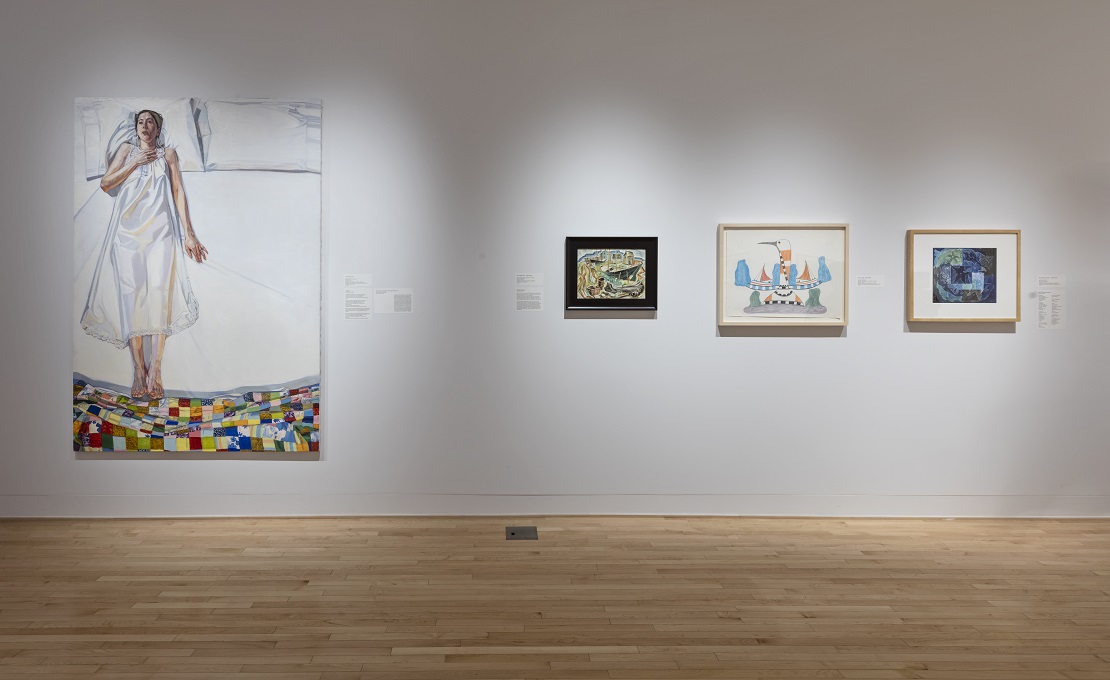Jan 20, 2018 to Jan 6, 2019
Inscapes
About the Exhibition
Artists: Micheal Adamson, Emily Carr (1871–1945), Rody Kenny Courtice (1891–1973), Sorel Etrog (1933–2014), Barkey Fairley (1887–1996), L. L. FitzGerald (1890–1956), Isabelle Hayeur (b.1969), Jean-Paul Lemieux (1904–1990), Arthur Lismer (1885–1969), J.E.H. MacDonald (1873–1932), Doris McCarthy (1910–2010), Jock Macdonald (1897–1960), Will Ogilvie (1901–1989), L.A.C. Panton (1894–1954), Pudlo Pudlat (1916–1992), Christina Sealey, Ernestine Tahedl, F.H. Varley (1881–1969), Gustav Weisman (1926–2000), York Wilson (1907–1984), Mary E. Wrinch (1878–1969)
Here’s to the stories yet to be told
– Alejandra Ribera, “Led Me to You,” This Island, 2017
Art gallery collections grow over time to include works produced in various mediums and dating from various historical periods. Artworks created before our time may appear quaint, even old-fashioned, while newer ones may engage with contemporary concerns, yet challenge our definition of art itself. Thematic group shows, are, at their core, an opportunity to place such disparate works into conversations with each other. What seems at first glance to be a forced or awkward pairing, may, ultimately, offer new and exciting readings.
Featuring works from the Varley Art Gallery of Markham’s permanent collection, Inscapes explores the landscape genre and considers the relationship between it and the natural world it depicts. Nathalie Desmet has said, “The tradition of landscape painting is in some way responsible for distancing us from nature, for making us forget that nature is an experiential place.”1 If this is true, how do we, as viewers, relate to images of landscape on a personal or even sensorial level? If we look beyond the intent of the artist and rely on our own individual experiences of the natural world, how does that process affect the ways in which we see and understand the artworks in this room?
This exhibition focuses on representations of the places we inhabit, whether they be physical or imagined. Seascapes, snowscapes, cityscapes, and even mindscapes, are generic terms used to describe the types of environments represented within an artwork. An “inscape,” on the other hand, is defined as the essential quality of a particular human being, object or location. In order to highlight such qualities among the works on display, writers Pushpa Acharya, Tina Zafreen Alam, Whitney French, Laboni Islam, Sheniz Janmohamed and Hyacinthe M. Miller have been invited to produce original texts in response to them. This cross-disciplinary approach seeks to expand the possible readings of artworks by offering new interpretations, by creating new stories, and bringing to our attention contemporary ideas and concerns. Hopefully, these new texts will allow us to remove the frames limiting our perceptions of the scenes depicted and allow our imaginations to expand beyond the confines of their borders.
1 Nathalie Desmet, “The Landscape, a Counternature: An Interview with Anne Cauquelin,” Esse Arts+Opinion, vol. 88 “Paysage/Landscape,” (Fall 2016), p.10





